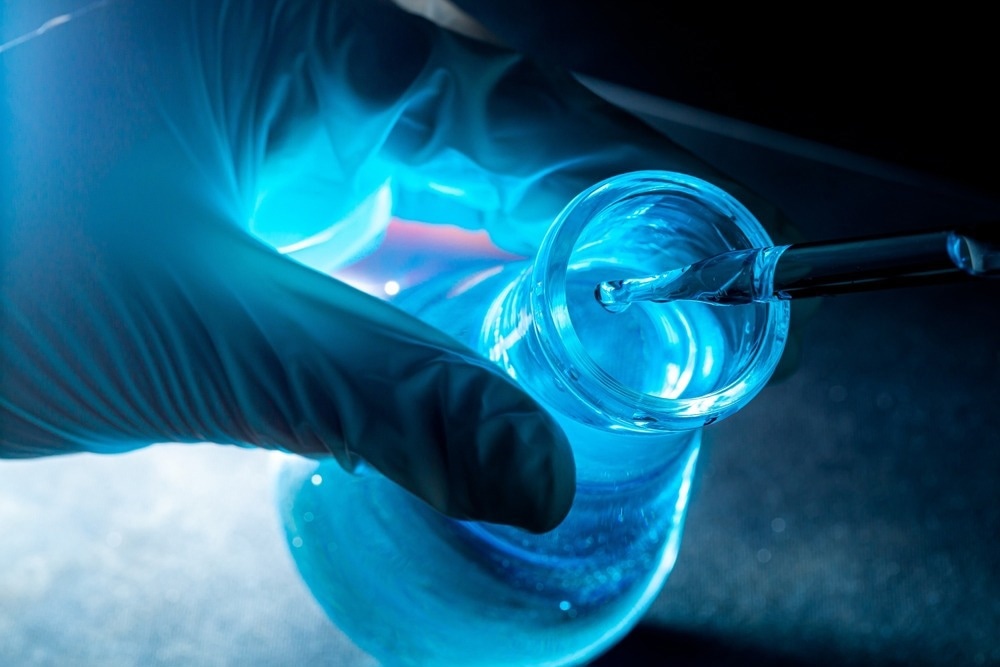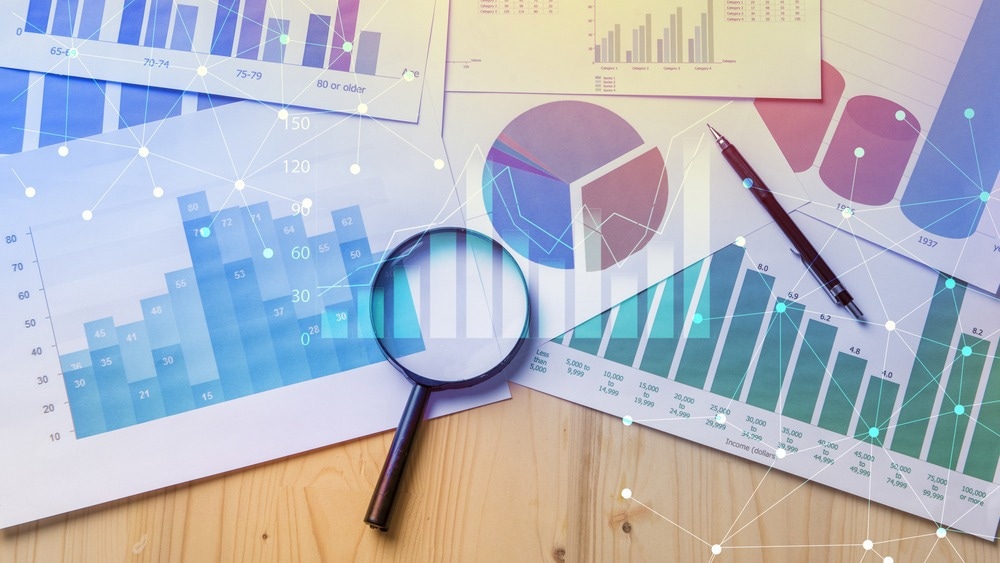Analytical chemistry is an exciting branch of chemistry that is dedicated to identifying and quantifying chemical substances. It is used to gain vital information on the composition of matter and the properties of substances. This discipline is important to many fields of science and various industries.

Image Credit: banjongseal324SS/Shutterstock.com
Application Areas of Analytical Chemistry
Analytical chemistry has found applications in numerous scientific areas and industries. Its ability to gain a deeper understanding of the composition of matter is vital to supporting the decision-making process in various fields.
One of the main areas in which analytical chemistry is used is environmental analysis. Here, it is used to monitor water, air, and soil, to check for the presence and volume of pollutants. It is also used to gauge the impact of industrial activities on the surrounding environment.
Healthcare also has many uses for analytical chemistry. Here, it is used in diagnosing diseases, monitoring drug levels in patient samples, and identifying and quantifying disease biomarkers in biological fluids. Also, analytical chemistry is used in quality control processes in pharmaceutical manufacturing. It is also used to establish the composition of pharmaceutical formulations as well as analyze the degradation of these products.
Forensic science also leverages analytical chemistry in several applications. It is often used in DNA profiling, as well as drug testing and analyzing the physical evidence found at crime scenes.
The food and beverage industry also makes great use of analytical chemistry. In this industry, it is used in quality control processes to ensure the safety and quality of food products. It is also used to detect contaminants, preservatives, and additives. Finally, analytical chemistry is also used to verify the nutritional content of a food product for labeling purposes.
Recent Developments in Analytical Chemistry
Currently, there are several trends and advancements that are impacting the field of analytical chemistry. First, in recent years, there have been some improvements in the sensitivity, resolution, and speed of mass spectrometry techniques. Additionally, scientists have begun more efficiently integrating mass spectrometry with other analytical techniques for more comprehensive analysis.
Lab-on-a-chip technologies have continued to advance in the last few years. These advancements are thanks to the continued miniaturization of analytical instruments, which has helped to increase their portability and accessibility.
Further, there have been recent advances in high-resolution chromatography. This has led to the establishment of enhanced chromatographic techniques, such as high-performance liquid chromatography (HPLC) and ultra-high-performance liquid chromatography (UHPLC).
The progression of data analysis and artificial intelligence (AI) is also having a profound impact on analytical chemistry. As the capabilities of AI and machine learning continue to advance, their use in analytical chemistry has become increasingly relevant. Now, the automation of data processing and pattern recognition is helping to enhance the capabilities of analytical chemistry. AI is being used in part to boost automation capabilities in analytical chemistry.
Finally, recent years have seen an increased interest in green analytical chemistry. This is a branch of analytical chemistry that is focused on minimizing or eliminating the generation of waste and the use of toxic substances in analytical chemistry techniques. The popularity of these methods has grown in response to the increasing urgency to develop and integrate environmentally friendly analytical methods.

Image Credit: Thanakorn.P/Shutterstock.com
Current Global Market of Analytical Chemistry
The current global market for analytical chemistry is growing. The global analytical laboratory instrument market was valued at $100 billion in 2022 and is elected to reach a valuation of $156 billion by 2027, growing at a CAGR of 9% over the period. The lab automation sector of the analytical chemistry market is predicted to grow at a slower rate of 4.31 CAGR from 2020 to 2025. In terms of green analytical chemistry, the global green chemicals market size is predicted to grow at a CAGR of 9.1% from 2022 to 2028, reaching a huge value of $16 billion by 2028.
Key players in the global analytical chemistry market include Thermo Fisher Scientific, Waters Corporation, Agilent Technologies, Shimadzu Corporation, Merck, Bruker Corporation, PerkinElmer, Inc., and Bio-Rad Laboratories, among others.
Current trends impacting the global market are numerous. The growing concern for the environment is potentially one of the current biggest influences on the global analytical chemistry market. The global increased awareness of environmental issues is a big driver for change in many industries, including the analytical chemistry industry. There is a growing demand for analytical techniques with reduced impact on the environment, such as green analytical chemistry techniques.
Following the COVID-19 pandemic, there has been increased investment in analytical techniques due to the importance of these techniques in diagnostics, vaccine development, and disease monitoring. As a result, there have been increased investments in developing analytical tools related to infectious diseases.
Currently, developing regions in Asia-Pacific and Latin America show promise for driving future growth in the industry as demand is driven by increased industrialization and expanding healthcare systems.
Future Directions of Analytical Chemistry
In the future, analytical chemistry will continue to grow and develop and respond to the changing demands of the industries that rely on it.
In the coming years, an increased focus from the healthcare industry on developing personalized medicine will impact analytical chemistry, which will be used to develop analytical tools to carry out precise molecular profiling, which is essential to personalized medicine.
In addition, the growing awareness of environmental issues has accelerated the demand for analytical chemistry techniques in environmental monitoring, as well as boosted the demand for green analytical chemistry techniques.
Final Thoughts
The analytical chemistry industry is a thriving field of science that can expect much more in terms of future developments. Such developments will be mainly driven by the demands of the healthcare industry, as well as the increased awareness of environmental issues.
Sources:
Analytical laboratory instrument global market report 2023 [online]. Available at: www.thebusinessresearchcompany.com/.../analytical-laboratory-instrument-global-market-report (Accessed November 2023)
Global Green Chemicals Market Size Worth $16684.27 Mn by 2028 | Vantage Market Research [online]. GlobeNewswire. Available at: www.globenewswire.com/.../...7-Mn-by-2028-Vantage-Market-Research.html (Accessed November 2023)
Lab Automation In Analytical Chemistry Market Size. Source: www.mordorintelligence.com/.../global-lab-automation-in-analytical-chemistry-market-industry [online]. Mordor Intelligence. Available at: www.mordorintelligence.com/.../global-lab-automation-in-analytical-chemistry-market-industry (Accessed November 2023)
Le, X.C. (2021). Analytical advances in detecting SARS-COV-2 and further research needs for COVID-19 testing. Analytical Chemistry, 93(24), pp. 8379–8380. doi.org/10.1021/acs.analchem.1c02327
Further Reading
Last Updated: Dec 17, 2024